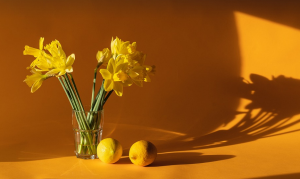
The Enduring Legacy of the Orange Bowl’s Entertainment
The Orange Bowl, a prestigious college football game held annually in Miami Gardens, Florida, has long been synonymous with its legendary halftime shows. From humble beginnings to captivating spectacles, these performances have become an integral part of the game’s legacy. For over half a century, the Orange Bowl’s halftime show has showcased a vibrant tapestry of music, dance, and artistry, drawing upon diverse cultural influences and reflecting the dynamic spirit of college football.
The tradition began in 1950 as a means to provide entertainment amidst the often-drab backdrop of a winter game. Early shows were characterized by marching bands and simple routines, emphasizing community participation and local talent. As decades rolled on, the Orange Bowl’s halftime show evolved into something truly extraordinary, becoming an event that captivated audiences and celebrated the very essence of college football.
Throughout its history, the Orange Bowl has hosted a diverse array of artists and performers, each contributing unique musical flavors to the spectacle. From beloved pop icons like Bruno Mars and Taylor Swift, who graced the stage in recent years, to classic rock legends like The Doobie Brothers and Queen’s iconic frontman Freddie Mercury, the show has consistently featured renowned musicians from various genres.
The Orange Bowl Halftime Show isn’t just about musical acts; it also celebrates a rich tapestry of cultural expressions. Dance troupes, acrobats, and visual artists have all enriched the performances with their unique flair. From elaborate stage productions to intricately choreographed routines, the show has evolved into a multimedia spectacle that blends genres and cultures.
The impact of the Orange Bowl Halftime Show extends beyond the confines of the stadium itself. It has become a defining cultural moment for college football fans nationwide. The vibrant energy and awe-inspiring performances have been captured on television broadcasts, solidifying the show’s place in popular culture history.
In recent years, the Orange Bowl Halftime Show has embraced inclusivity, reflecting this evolving era of entertainment. Diverse musical artists from various backgrounds have taken center stage, highlighting the richness and diversity of American music and its cultural contributions.
The Orange Bowl Halftime Show is more than just a spectacle; it’s a testament to the enduring power of live performance, celebrating the spirit of competition and community all while showcasing a vibrant artistic expression. It stands as a timeless tradition that continues to leave an indelible mark on college football culture.
Beyond music and dance, the Orange Bowl Halftime Show has also fostered a deeper connection between athletes and fans. Witnessing their favorite stars come together for this iconic performance provides a sense of shared unity and excitement, fostering a stronger bond between players and audiences. This collaborative spirit has become a hallmark of the event.
As college football evolves in the 21st century, the Orange Bowl Halftime Show continues to adapt to the changing landscape of entertainment. With each passing year, innovative approaches are implemented to ensure the show remains relevant and engaging for future generations. From incorporating cutting-edge technology to featuring emerging artists from diverse backgrounds, the show has always striven to provide a unique and memorable experience for its audience.
The Orange Bowl Halftime Show represents a vibrant tapestry of musical artistry, cultural celebration, and community spirit. It’s an event that continues to embody the joyous energy of college football while offering a platform for artists to showcase their talents and connect with audiences worldwide.


